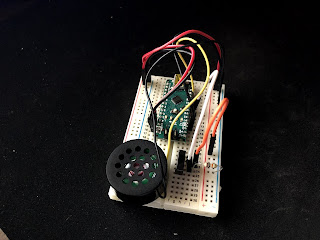Task Manager

For my final project, I decided to use the Arduino as a controller for a computer game made using Processing. The game requires the player to constantly be managing both of the lines that change direction based on the 2 switches and both of the balls that bounce based on the 2 push buttons. If any of the lines or balls reach either the top or bottom of the game screen, the game is over. In terms of wiring, I tried my best to keep it extra clean and decided to hide them by simply covering them with paper. Thankfully, the breadboard is small enough that it can be held without feeling clunky or unlike a really game controller. Source Code: https://github.com/alexpasieka/task-manager


